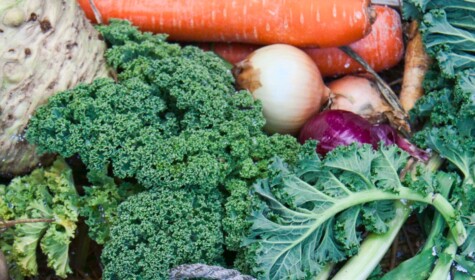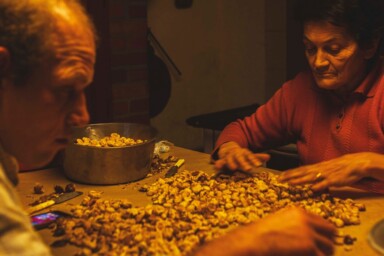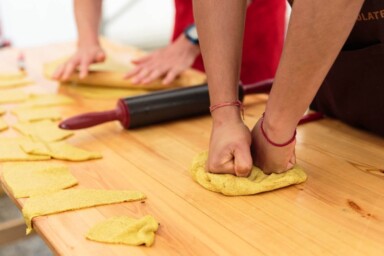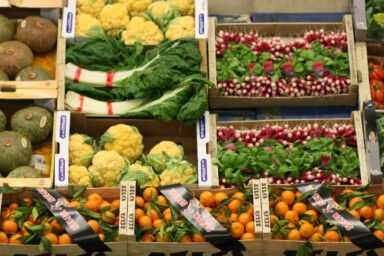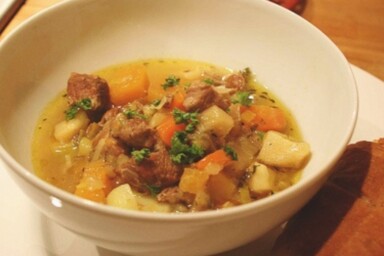The question of who eats local food is a tricky one to pin down.
There is first the question of what constitutes ‘local food’ – if you’re a farmer raising grass-fed beef or lamb in Wales that you then sell across country, most people would say that’s local enough; but what if you sold across the UK? How about the local jam producer that sells locally at farmers’ markets in their region but buys in fruit from Spain to make the jam? It’s something of a conundrum. You’ll also find that distance is yet another variable – many would agree that ‘local’ in the UK is within 50 miles, but in a big country like the US, food 500 miles away can also be ‘local’. So, it’s complicated and to a certain extent, how we define it may be idiosyncratic and particular to how each individual feels about the food they are eating.
‘Local food’ also suffers from an image problem – it’s assumed to be niche, more expensive and the purview of the upper middle-classes. A number of years ago, food critic Jay Rayner had a notable go at farmers’ markets, touting them as selling ‘over-priced fare’ as a ‘status symbol’, angering Welsh food producers. But ‘local food’ isn’t what many people posit it is – I know, because I’m a local food producer. While my evidence is inevitably anecdotal, I know we feed a diverse range of people. We run a box scheme serving well over 100 households and also do a weekly producer’s market in Newport, Pembrokeshire. The people who buy from us are anything but uniform in terms of their demographic make-up – I say this because we know a lot of our customers. Many of the same people come week on week to the market and we chat to them as they shop and over the years, we have gotten to know many of them. And we have always been involved in deliveries for our box scheme. We visit houses that are grand and much more often, ones that aren’t.
What I know from the people in our box scheme is that we have several artists, many farmers, two lawyers, two vets, a good handful of people in healthcare – mainstream and alternative – a lot of older retired people, and people who have opted out of the mainstream, working for themselves. And, it might be surprising, a number of people on low incomes. I don’t know what everyone does but I’m pretty sure their incomes cross a wide spectrum.
I asked some of our customers their thoughts on local food – where did it fit in their shopping and why did they join a local veg box scheme? Annette, who’s been on the box scheme a couple years, joined out of practicality. She’d been in a serious accident and couldn’t get out on her own to shop, and a support worker told her about us. But she’d always valued local food; she says, ‘I’m old enough to remember the days before supermarkets and miss those days in a lot of ways. Everyone bought food locally then as it was the only way you obtained it apart from growing it yourself!’ She grew up in inner city Birmingham, ‘council house stock’ she says, and now lives in a mobile home in rural West Wales. She hates waste and ‘has a horror of food miles’, never eats a take-away, cooks for herself and always composts her vegetable waste.
Alex, another customer, is a ‘millennial’ – a 32-year-old environmentalist, he shops carefully and says he’s ‘been slowly practicing ways to reduce my impact on the world’ since he was 16. He came to the box scheme already valuing nutritious and sustainable food. But he also values ‘local’ more broadly, wanting to spend more money in the community, aware of the how that strengthens it financially, especially in rural areas. He has tired of seeing ‘wealth disappear into supermarkets’, he says.
An artist in the box scheme shares similar values to Annette and Alex: she ‘wanted to eat organic vegetables that were grown within a couple of miles to where I lived’ because of concerns about food miles, environmental impacts and health. She also feels that she ‘spends more money going to the supermarket than targeted purchases made locally’, so there’s more economic value in her local purchases. She buys from an on-farm butchers, because she feels the animal welfare standards are higher. Her shopping choices are increasingly influenced by ‘the wider debate of animal welfare, the use of pesticides and the cost to the environment’, and COVID-19 and Brexit, she says, have both brought ‘food security under the spotlight’.
These kinds of concerns are part of what is driving the interest in local food, especially in relation to the pandemic when we saw our box scheme triple in 10 days. Many of the people who joined the box scheme then are with us still and the numbers continue to climb, albeit more slowly. Some of our more financially-pressed customers have left the box scheme – one woman had lost her job and felt her finances were too tight to warrant a weekly veg box and others made similar choices. We have worked as best we can with people on the box scheme, some paying in differing amounts as they struggle from week to week, but at least paying something each time. This is when the varying demographics of our box scheme really become apparent. We farm in Ceredigion, one of the counties in ‘West Wales’ which is the poorest region in Northern Europe.
These are not people who buy ‘over-priced fare’ as a ‘status symbol’. They buy local food because they value it and while it might not be the cheapest food available, it definitely has fewer hidden costs – the damaging externalities that aren’t paid for in production. People increasingly want food with a better story, food they can trust has better animal welfare, fewer environmental impacts with less food miles, that comes from local communities and that supports local communities.
There is growing evidence that eating local is increasing, particularly in light of Brexit and COVID-19. As we leave the EU and transition to a new agricultural policy, it is imperative that Government wakes up to the rising and broad-based consumer demand for local and sustainable food and supports this accordingly through policy and financial incentives. It’s time to build on the resurgence of local food, stay close to home with our veggies and meat and build on the vital self-sufficiency that local food can provide.
